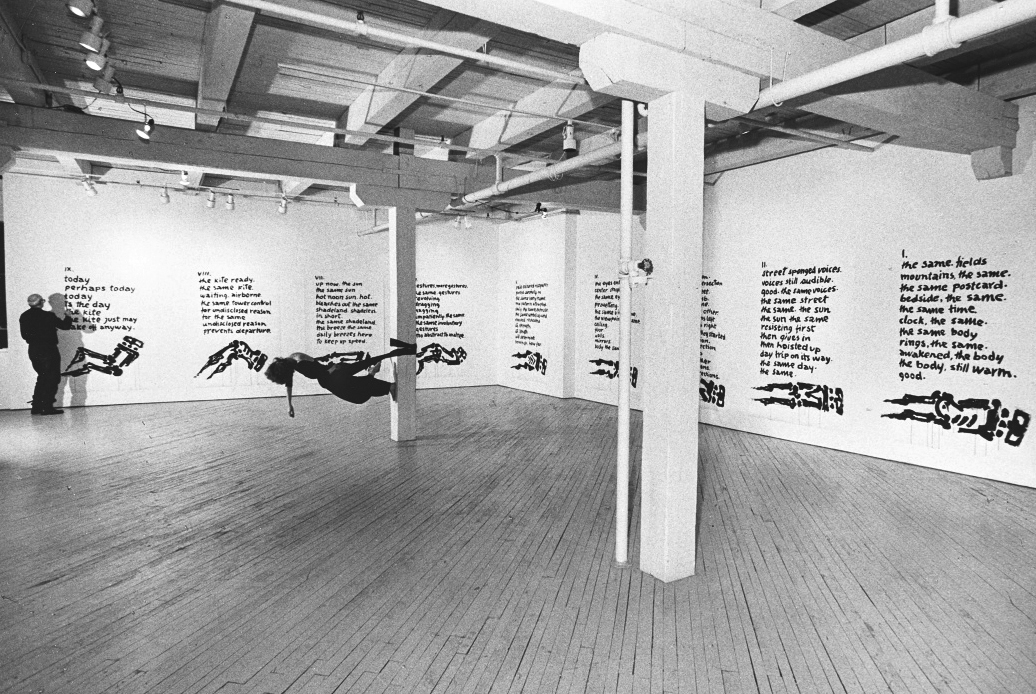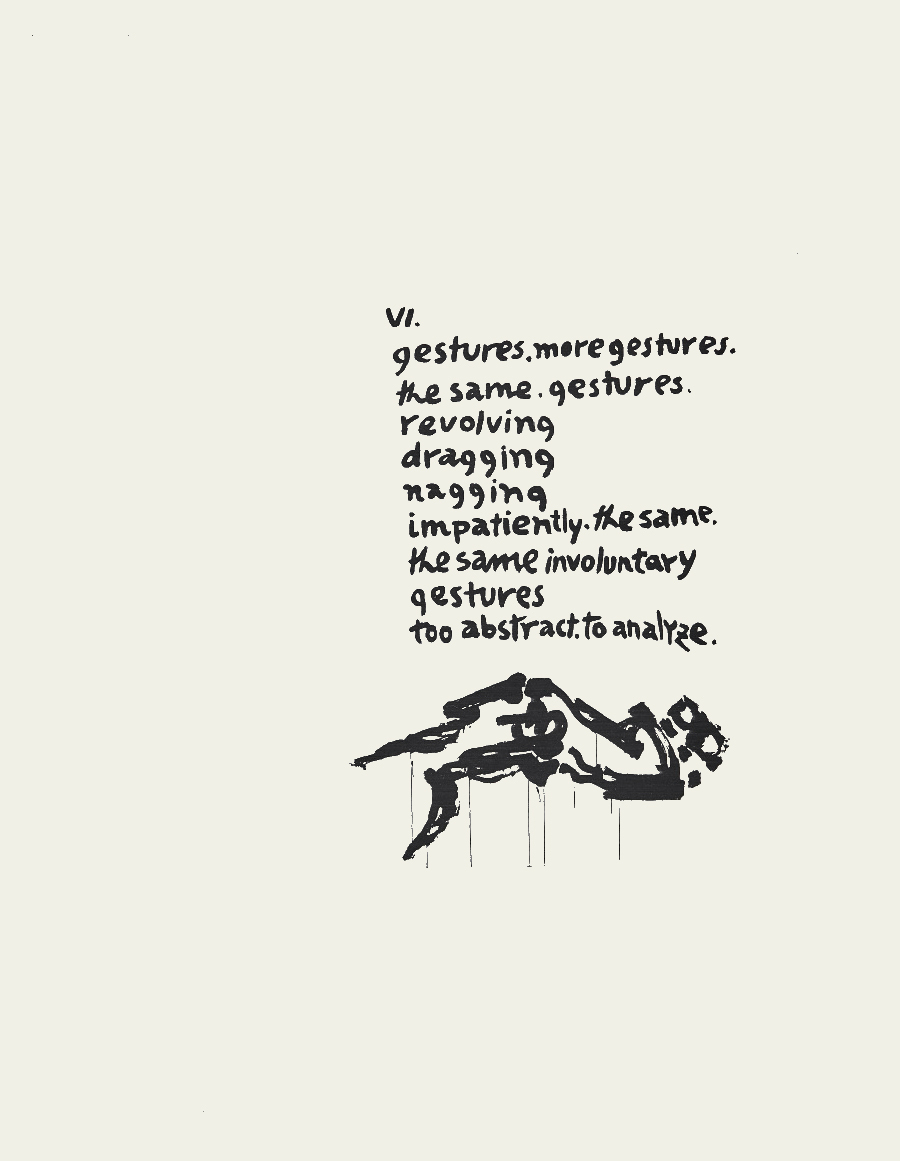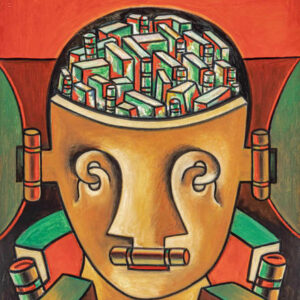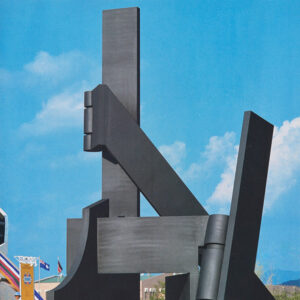The Bodifestation of the Kite 1984

Sorel Etrog, The Bodifestation of the Kite (installation view at Grunwald Gallery, Toronto), 1984
Performance with Gloria Luoma at Grunwald Gallery, Toronto
Various media including drawing, dance, and music
On Friday April 13, 1984, Etrog celebrated the seventy-eighth birthday of his friend the author Samuel Beckett. Instead of throwing a party, Etrog created a performance piece that included, among other elements, a poem he had written for Beckett and paintings done “with Beckett in mind.” This one-night, once-in-a-lifetime event was sponsored by Etrog’s long-time gallerist, Walter Moos, and took place at the Grunwald Gallery on Spadina Avenue in downtown Toronto. Beckett was not present, so Etrog channelled him as a source of inspiration and acknowledged their decades-long friendship and the creative collaboration that stemmed from it.

This multimedia celebration was a complex affair. In front of an audience of about 150, Etrog inscribed his poem “The Kite” onto nine large panels, illustrating each verse with an image of a human figure. The panels were done quickly, in “less time than it takes to smoke a cigarette.” Etrog explained that the speed was necessary to “get away from… showing that I know how to draw.” The illustrations appeared to be spontaneous, but Etrog actually invested much time and effort in conceptualizing and preparing for the live performance. He tested several variations of the figure until he reached the final design, then rehearsed the body and posture over and over again until he memorized them well enough to reproduce them live.
Etrog also made architectural drawings of the Grunwald Gallery, imagining the space, the setting, the lighting, and where the audience would sit. He created a nine-stage “visual concept” for the dancer who would perform the choreography he had created, which was set to recorded music he had composed. Veronica Tennant was originally going to be that dancer, but due to injury was replaced at the last minute by Gloria Luoma, also of the National Ballet of Canada. Luoma began the performance wrapped like a mummy in a two-and-a-half-metre-long black satin ribbon and gradually unravelled herself in a slow, enchanting dance. Robert O’Driscoll, a University of Toronto professor and a friend of Etrog’s who was present at the performance, called it “a kind of resurrection ritual.”
The kite of the work’s title was evoked in the movement of the dancer, who, at a certain point, appeared suspended, held only by a black ribbon like a kite on its string. The image also appeared in Etrog’s poem in reference to Beckett’s physiognomy (“pale coloured ricepaper / pasted carefully, on / the same bony frame”). The theme of the poem, which inspired the performance as a whole, is the tragic repetitiveness of daily life:
The same. fields
mountains, the same.
the same postcard
bedside, the same.
the same time.
clocks, the same
This “total work of art” was described by Joyce Zemans as a unique event, “a dramatic, visual, literary, and music experience, the like of which has seldom been seen in Toronto,” leading the art historian to call for a re-evaluation of Etrog’s body of work: “The Kite has clearly indicated that [Etrog’s] medium is restricted to neither marble or metal. From words, line, music, light and dance Etrog has fashioned a brilliant and moving artwork.” The performance piece had a second and third life: the drawings were exhibited at Gallery Moos in Toronto and were also published in book form, with editions in Italian and French.

 About the Author
About the Author
 More Online Art Books
More Online Art Books
 Acknowledgements
Acknowledgements